|
|
Post by Robert Coleman on Mar 12, 2010 15:22:29 GMT -5
Yes, I was also following that one but decided not to bid on it saving my money to bid on the tabak. Didn't work out though seeing what it went for. I'm glad that I didn't bid on the piece that you won though as it would have only driven up the price. I'm very happy to see that you were fortunate enough to win it and am looking forward to the new pictures of it after it arrives. My congratulations to you on this VERY nice addition to your collection. ;D
Robert
|
|
|
|
Post by dimasalang on Apr 21, 2010 1:16:36 GMT -5
Hi Robert, I'd like to sell off a couple pieces. Let me know if youre interested.   $70  $55 |
|
|
|
Post by VeeVee on Apr 21, 2010 5:33:02 GMT -5
Hi Kev, it's probably good to put a bit of background write-up on these two. They look nice and clean.
|
|
|
|
Post by Robert Coleman on Apr 24, 2010 17:28:08 GMT -5
Hello Kev,
Please check your email and thank you.
Robert
|
|
|
|
Post by Robert Coleman on Sept 12, 2010 2:49:14 GMT -5
Hello everyone, I know it has been a few months since I have posted but I was hoping that in the mean time some of the other member of this forum would follow through and start posting some of the edged weapons that they have in their own collections. I am posting this to hopefully encourage this to happen. I will be posting a few more items from my own in the next few days. I hope that in the mean time some of the other members here will get things going by posting some pictures and information on the items that they have. Looking forward to seeing some new items before my next post.
Best Regards
Robert
|
|
|
|
Post by VeeVee on Sept 12, 2010 9:40:34 GMT -5
Thanks Robert. I hope other people post their collections too. I suspect those who most frequently post here don't have any, and those who do have some, just lurk. My only blade is an m1905 bayonet and it's not Filipino, it's US army.
I wonder if you could have a quick blurb for each piece over time. With info on what it's called, what region they came from... what time frame. How acquired and guesses on how it made its way stateside... that kind of stuff. Fascinating.
Thanks for posting your collection. Keep 'em coming.
|
|
|
|
Post by Robert Coleman on Nov 1, 2010 21:37:35 GMT -5
|
|
|
|
Post by VeeVee on Nov 4, 2010 13:15:25 GMT -5
Congrats! Looks in pristine condition. Did you clean it or was it already in that condition when you acquired it?
|
|
|
|
Post by Robert Coleman on Dec 7, 2010 16:07:52 GMT -5
Hello Vee Vee,
I did a light cleaning on it after it arrived to remove most of the oxidation that it had acquired over the years to help preserve it for the future. Because of its potential historical value this dagger has now moved on to a better and more appropriate home where I know it will be well taken care of.
Robert
|
|
|
|
Post by Robert Coleman on Aug 23, 2012 1:25:08 GMT -5
Hello everyone, I thought that I would add a picture of a couple of panabas that I have added to my collection. The top one is from the late 19th century while the lower one is from the very early 20th century. Robert 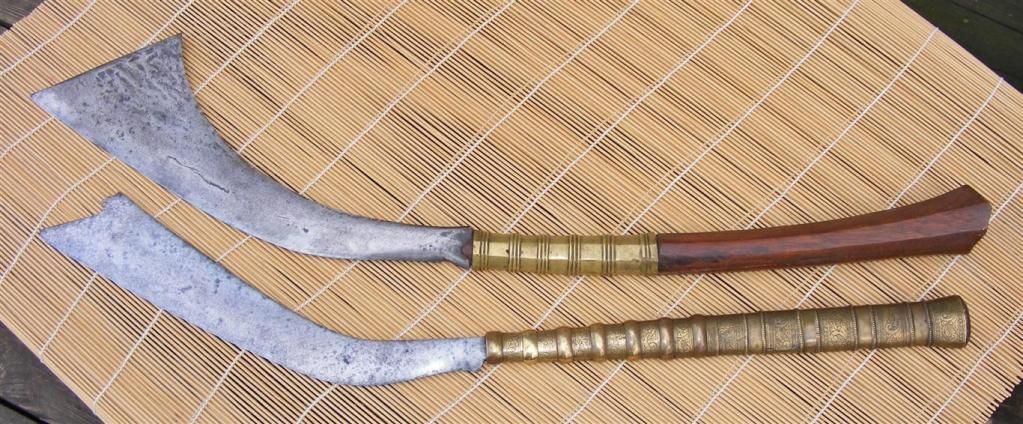 |
|
|
|
Post by VeeVee on Aug 25, 2012 0:02:05 GMT -5
Beautiful... congrats on your latest additions.
Was the panabas more indigenous to a certain region of the Philippines? These looked like they belonged to royalty.
|
|
|
|
Post by Robert Coleman on Aug 25, 2012 11:37:01 GMT -5
From Wikipilipinas,
"The Panabas, or Tabas, is a favored chopping weapon by the Moro tribe in Mindanao. Traditionally for agricultural purposes, this battle-axe-like weapon became prominent in the 19th century and rarely seen nowadays. The single-edge sword Panabas ranges from 2 to 4 feet and can easily be gripped with one hand or two hands. With its sharp blade, this sword can cut and butcher anything it comes in contact with right in half. The Panabas can also be used as an execution weapon which made it a representation to a Datu's power and prestige - by having such weapon to control violence. Like the kampilan, the Panabas was a special weapon present in ceremonies and campaigns."
Of the two that I have shown above, the upper one I believe to be from Sulu and the lower one is Maranao in origin. These would have been carried by one of the Datu's retainers and were used as a show of power and to deal out justice according to law such as beheading or the removal of other body parts depending on the offense.
|
|
|
|
Post by Robert Coleman on Aug 25, 2012 14:34:21 GMT -5
A nice Maranao gunong with ivory hilt and what I believe are swasa fittings. From Wikapilipinas "Commonly known as Punal or Punal de Kris, the Gunong, is the dagger version of the Moro kris. The name is often associated with objects that are from Mindanao, where acculturation is strong - like in the Sultanate of Maguindanao, as compared with that of the Sultanate of Sulu. There are different Gunong designs - popular are those that are straight, and those double-edged ones. Some mirrors the feature of a kris, only relatively shorter. Like the punyal, the straight gunong is crafted to be a side arm. Gunong is worn by tucking it in a sash - not to suggest a fight, but because of its functionality. Introduced by the natives from Southern Philippines, specifically the Maranao, this weapon gained respect among Filipinos all over the country primarily because of its usage and intricate form." 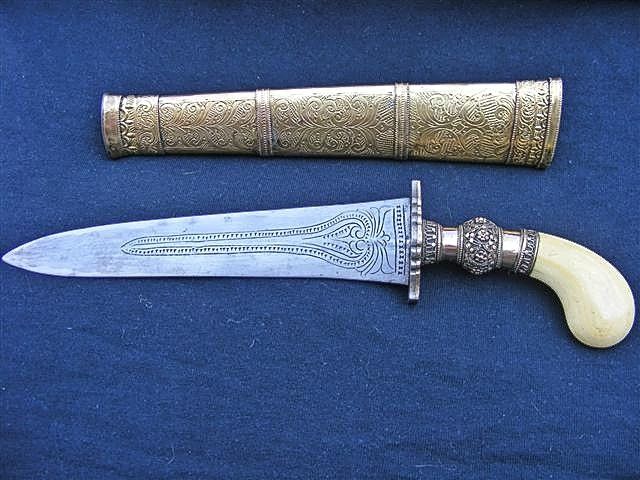  |
|
|
|
Post by VeeVee on Aug 26, 2012 0:14:28 GMT -5
Very nice piece as well. Great condition.
|
|
|
|
Post by Robert Coleman on Aug 31, 2012 1:23:50 GMT -5
Thank you VeeVee, here is another piece you might like. A late 19th to early 20th century Luzon kris from Ilocos Norte. This is quite long measureing in at 29-3/4 inches total length with a 24-1/2 inch blade. 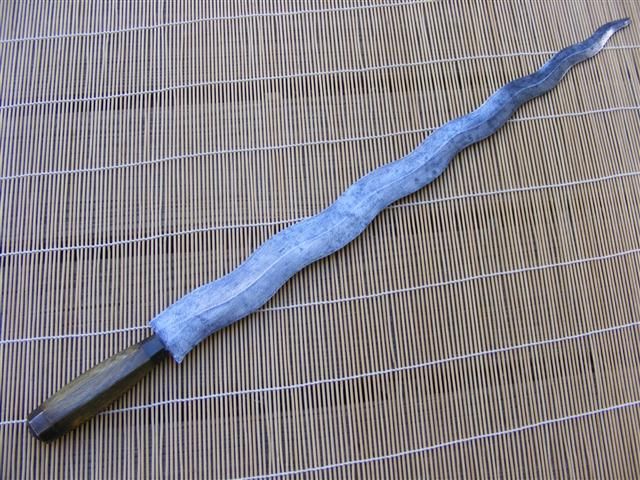 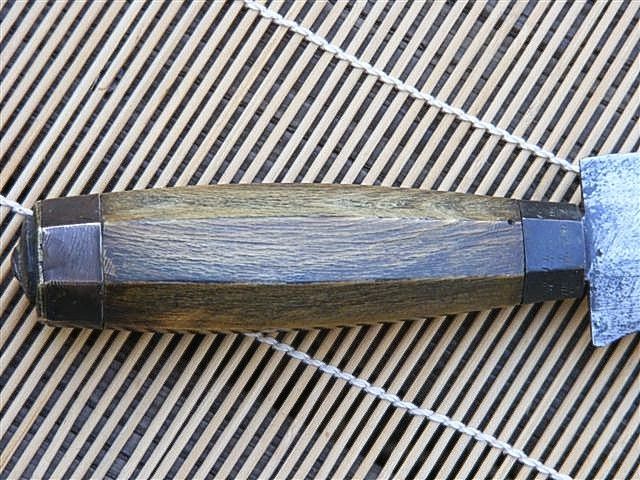 Robert |
|
|
|
Post by VeeVee on Sept 1, 2012 7:30:16 GMT -5
Do you think it used to have a hand guard that came off or built as is?
By the way I sent you a forum message.
|
|
|
|
Post by Robert Coleman on Aug 23, 2014 14:42:11 GMT -5
Hello everyone, I am sorry that I have not been posting for a while now but things have been a little on the hectic side this year. I hope to be a little more active in the future. I was lucky enough this last week to be able to acquire this matched pair of Katipunan era bolos for my collection. Beautiful carved carabao (water buffalo) horn hilts with coin silver fittings. There is unfortunately there is some bug damage, but that will be taken care of later. The measurements are; Total length = 23-1/2 inches Blade length = 16-1/2 inches in length Width at widest point = 2-3/8 inches Thickness at hilt = 9/32 inch |
|
|
|
Post by Robert Coleman on Aug 23, 2014 14:46:32 GMT -5
|
|
|
|
Post by VeeVee on Aug 25, 2014 21:50:55 GMT -5
Beautiful! Thanks for sharing  These are not mine. It's a friend's collection. 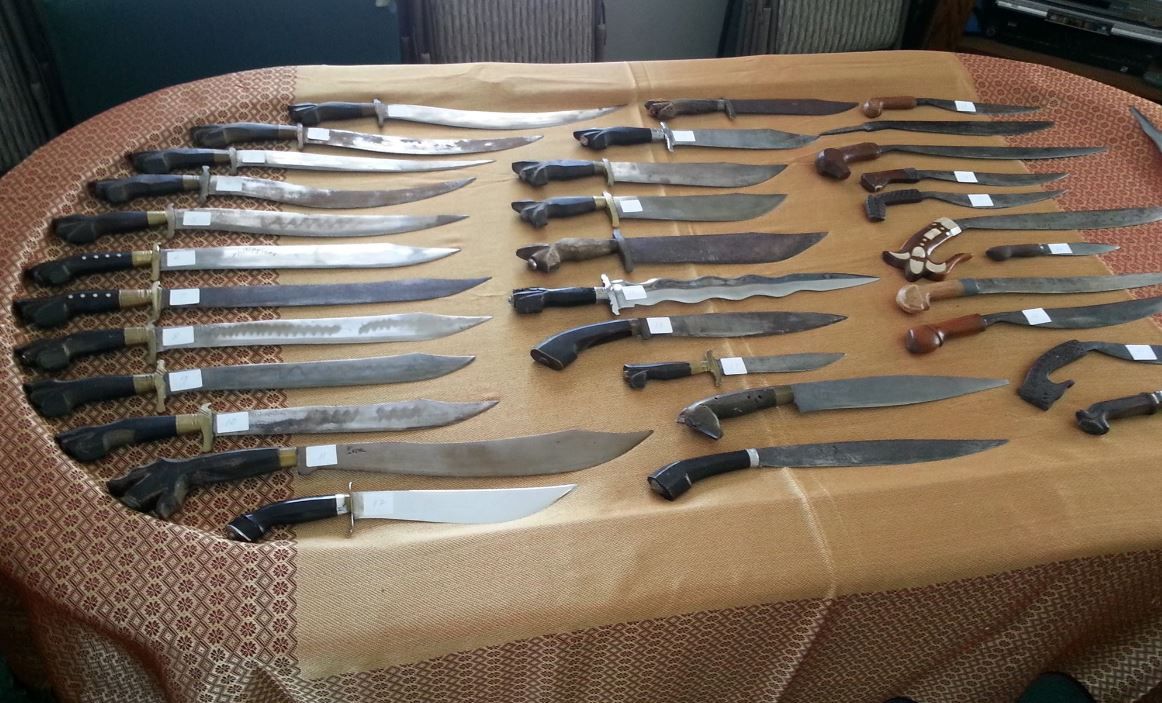 |
|
|
|
Post by Robert Coleman on Mar 4, 2018 0:26:51 GMT -5
|
|